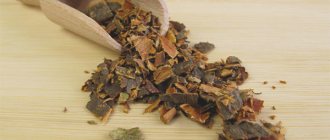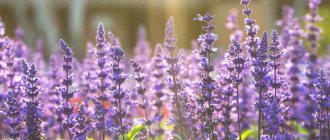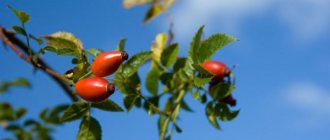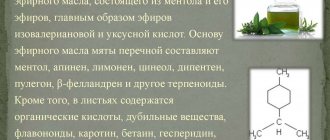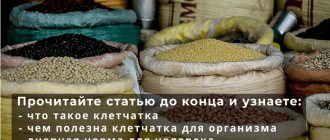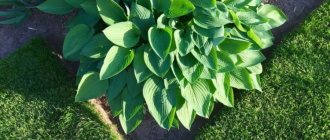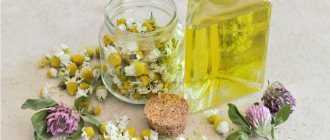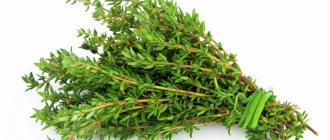Features and types of plants
In addition to its specific smell, which cannot be confused with anything else, wormwood also has a bitter taste. Who among us did not taste its leaves in childhood?
Meanwhile, traditional medicine considers this plant an excellent assistant for treating the stomach and intestines, as well as for digestive problems.
We should not forget that the effect of wormwood is quite strong, almost toxic. Uncontrolled use of this herb will inevitably cause side effects such as nausea, abdominal pain and fainting.
To prevent this from happening, I advise you to carefully read the recommendations for its use and consult your doctor.
Perhaps not everyone knows, but this plant has several hundred species. The most commonly used in pharmaceuticals is bitter (white) wormwood, while the average person is most often familiar with wormwood.
Among other types of herbs, the most valuable from a medicinal point of view include the following:
- Tsitvarnaya - grows in Central Asia and is used for the production of essential oil, as well as deworming remedies.
- Common (black or Chernobyl) is the most common species, considered a weed. The pharmaceutical industry uses it little, but it has found application in folk medicine. Chernobyl improves digestion and helps with nervous disorders.
- Gmelina is a medicinal species characteristic of the Far East and has a tree-like stem.
- Crimean and Caucasian - these low-growing species grow in the Crimea and the Caucasus, have gray leaves.
- Steppe is a perennial herb with green leaves and reddish flowers, growing mainly in fields and steppes. Healing creams and medicines for epilepsy are made from it.
- Stone and mountain - these species grow mainly in China and the Far East, famous for their antipyretic and diuretic properties.
- Lemon (tall, blue) - this variety of wormwood has been valued since ancient times for its healing properties: it is even popularly called “God’s tree.” It is not as bitter as regular wormwood and can be used in cooking. In addition, it contains a large amount of essential oil. If earlier the tree of God was used to protect the home from evil spirits, then in our time it is regularly used as an ornamental plant for country gardens and vegetable gardens.
Common wormwood description
Wormwood is distributed throughout the Northern Hemisphere of the Earth, so the Latin name of the plant uses the word vulgaris, which means “found everywhere.” In Russia, it grows throughout the country along roads, near homes, in vegetable gardens, gardens, wastelands, forest edges, meadows, river banks, sometimes forming large thickets.
Common wormwood is a perennial herbaceous plant 80 - 150 cm to 2 m high with an erect, branched, brownish-brown stem. The leaves are alternate pinnately dissected, dark green above, white-tomentose below, covered with white hairs, the edges of the leaves are slightly curved down, the upper leaves are smaller and simple. The rhizome is multi-headed, short, vertical with numerous roots.
The flowers are small, tubular, yellowish-brown in oval baskets with a diameter of 3 - 5 mm, which form a long, dense paniculate inflorescence. It blooms in July - September, the fruits - small brown achenes up to 2 mm long - ripen in August - October. It reproduces by seeds; there can be up to 1 million seeds on a plant. Wormwood has a strong, pleasant, spicy odor and a slightly bitter taste.
In folk medicine, herbs and roots are used for medicinal purposes. Common wormwood grass is collected during flowering in July - August, the roots are harvested in the fall in October - November or early spring. Wormwood grass is collected by cutting off the tops and side branches up to 35 cm long and no more than 5 mm thick with pruning shears.
The roots are dug up, washed in cold water, the lateral roots are used, breaking them off from the main stem, selecting the soft, juicy parts. Dry the raw materials in the air under canopies, laying them out in a thin layer on paper or tarpaulin until the stems and roots become brittle. Can be dried in dryers at a temperature of no more than 40° C to prevent essential oils from evaporating. Raw materials can be stored for no more than 3 years.
The herb of wormwood contains essential oil 0.1 - 0.61%, which contains cineol, borneol, thujone, the plant contains carotene, ascorbic acid, B vitamins, tannins, mucilage and resinous substances, inulin, saponin, flavonoids and other substances.
The roots contain essential oil up to 0.1%, mucus, resins, tannins, inulin and others.
The healing properties of wormwood were known in Ancient Greece, Hippocrates and Dioscorides wrote about it, and in Rome Pliny and Galen treated it.
In the old days they believed in the miraculous power of wormwood; it was surrounded by many legends and superstitions. On the day of Ivan Kupala, when, according to legend, all herbs acquire special power, wreaths were woven from it and put on the head, and they were girded with it in order to protect themselves from witchcraft and disease for the whole coming year.
The scientific name of the genus wormwood comes from the name of the goddess Artemis Artemis - the daughter of Zeus, the goddess of the animal and plant world, later she was also revered as the goddess of the Moon, hunting, and patroness of women in childbirth.
According to another version, the name of the genus of herbs comes from the Greek word artemes - fresh, healthy. Other popular names for the herb are epylnik, chernobylnik, belnik, bobylnik, weeds, bitter epylnik, horsewort, sukholom. The name Chernobyl plant is associated with the name of the dark, blackish stem - blade of grass.
Collection and drying
In order to use wormwood in medicinal recipes, it must be properly collected and dried.
It is believed that the upper part of the plant (flowers, stems, leaves) and rhizome also have beneficial properties. But most often it is the inflorescences that are used, as well as the youngest, most tender leaves.
The best time to collect flowers is the beginning of their flowering, that is, mid-summer. The May collection of leaves is most valued, because they have not yet become too bitter, and it is recommended to dig up the roots in the fall.
Drying wormwood is no different from drying other useful herbal infusions. The collected raw materials should be carefully laid out in a thin layer in a well-ventilated place where moisture will not reach them. To dry the stems, it is better to tie them into small bunches and hang them from the ceiling.
When the wormwood is dry, place it in cloth bags.
It is believed that a dried plant can be stored for 2 to 3 years.
Fun fact: Artemisia is an important component in the diet of many animals, such as rabbits. Eating this plant allows them to be less susceptible to various diseases and strengthens their body.
Healing Features
This plant has a whole list of characteristics that will be useful for both men and women:
- relieves inflammation;
- fights worms;
- has a diuretic effect;
- improves appetite;
- acts as a natural antiseptic;
- reduces pain;
- calms the nerves;
- relieves cramps;
- helps fight fungus.
Wormwood contains:
- plant essential oil;
- tannins;
- absinthine;
- artabsin;
- vitamins A, C, K, B6;
- flavonoids;
- proteins.
Application in cosmetology
The plant contains substances that allow women to look young. Decoctions and infusions are used as a drink, and are also used externally to heal problem skin. In this case, the following effects of the herb are manifested:
- metabolic processes are activated;
- the functioning of the sebaceous glands is regulated;
- anti-aging effect is observed;
- removal of toxins improves skin color;
- lotions and steam baths relieve irritation, inflammation and itching.
Wormwood infusions are also effective in caring for weakened hair. The product is used as a rinse, and is also included in nourishing masks that promote healthy bulbs and strengthen the roots.
Indications for use
For what diseases does it make sense to use wormwood?
Diseases of the gastrointestinal tract
Wormwood improves digestion, relieves bloating, and saves from heartburn. With its help you can cope with both constipation and diarrhea.
This herb can increase the level of acidity in the stomach, and also provide invaluable assistance in the treatment of food poisoning.
Metabolism
Regular consumption of wormwood can improve metabolism and remove toxins from the body. Due to this, the plant is often used in diet menus aimed at weight loss.
Bladder diseases
Wormwood can help remove stones and help reduce discomfort from colic in the kidneys.
Other
Infusions of this herb can reduce fever and relieve coughs from colds and flu.
If there are problems in the field of gynecology, wormwood improves the menstrual cycle, reduces pain and cramps during menstruation.
If you are stressed and suffer from sleep disorders, then the plant will help you too. It will also improve memory and relieve nervous tension.
It is believed that this herb can also be useful for cancer. Of course, we are not talking about a full-fledged drug. However, if your doctor does not object and you do not experience any unpleasant symptoms, then wormwood may provide some support to the body in the fight against cancer.
The decoction will help reduce discomfort during an exacerbation of herpes, as well as reduce rashes.
Remedies with wormwood are popular for combating various parasites, such as worms. In this case, decoctions of wormwood and tansy are especially effective.
This herb can also strengthen the body’s immune system and tone it.
Medicinal properties
Thanks to its powerful composition, the plant has antiseptic, anti-inflammatory, and choleretic properties. Even traditional medicine practices the use of wormwood tincture to enhance the secretory activity of the gastrointestinal tract. But the healing effects are not limited to this - the herb is used for many diseases:
- plant preparations are an excellent means of stimulating appetite;
- Wormwood is also recommended for gastritis that develops against the background of low acidity;
- The herb is also useful for other stomach diseases, as well as for the treatment of the liver and gall bladder;
- a herbal decoction can stop dysentery, get rid of parasites and eliminate flatulence;
- the plant is useful for hemorrhoids and rheumatism;
- with the help of wormwood you can get rid of obesity and cure anemia;
- The plant is used in gynecology and in the treatment of diabetes;
- decoctions have a calming effect on the nervous system and will help patients with epilepsy;
- wormwood – an auxiliary remedy for cancer;
- Even with alcohol abuse, weed is used to get rid of the bad habit.
Wormwood is also used externally - in the form of compresses and lotions, as an analgesic and hemostatic agent. It is recommended to rinse the oral mucosa with the infusion of the herb to get rid of the unpleasant odor. And enemas in combination with garlic are destructive for pinworms.
Crushed fresh leaves applied to wounds promote rapid healing. The same remedy can relieve inflammation from dislocations, bruises, sprains, skin ulcers, etc.
How to use
So, we have looked at cases where wormwood can be used and have a positive effect on a person’s well-being.
How exactly should it be used at home?
Tincture
To improve digestion and combat stress, a tincture with wormwood in alcohol is most often used. It can also be used as a rub for muscle pain and bruises.
To prepare this product you need:
- dry wormwood powder – 1 part;
- alcohol or vodka – 10 parts.
Mix the ingredients and infuse the liquid for two weeks. Then strain and take 15-20 drops no more than three times a day.
An interesting fact: the alcoholic drink based on wormwood - absinthe - is not an analogue of tincture and does not have medicinal properties. On the contrary, its effects are similar to those of a drug, and this drink is more likely to harm your health than benefit it.
You can learn more about wormwood tincture and how to take it from the articles on our website.
Decoction
The decoction is used both internally and as lotions are made with it. It can also be added to aromatic healing baths designed to reduce pain from rheumatism.
To prepare a decoction, just take one tablespoon of crushed dry wormwood and pour a glass of boiling water over it, put on fire and cook for a couple of minutes. The broth should sit for half an hour, then it can be filtered.
You need to drink this remedy a quarter glass before meals.
You can learn more about the healing properties of the plant in the video.
Treatment of hemorrhoids
The use of wormwood for hemorrhoids is popular due to the medicinal properties of the plant. Nutrients help relieve pain and resolve hemorrhoids. The most popular is the use of baths with Chernobyl.
Chernobyl has an effective therapeutic effect in the early stages of the disease. Preparing a bath with medicinal herbs:
- Take 2 liters of water into an enamel container and put it on the fire.
- Add 5 tbsp to water. l. dry raw materials.
- Boil for 15 minutes.
- Fill a basin with 6 liters of boiled water at room temperature.
- Pour in the prepared strained broth.
It is better to take a sitz bath before going to bed to eliminate painful symptoms and discomfort. Procedure time – 15-20 minutes.
Uses of seeds and root
The seeds and rhizomes are also full of useful substances, so they can also be used to prepare medicinal preparations.
From seeds, for example, essential oil and extract are obtained.
In order to make an extract, you need to take the crushed seeds and pour them with olive oil at the rate of 1:4.
Let the product sit for at least 10 hours.
The extract usually turns out to be very bitter, so I recommend diluting it with honey or water. Take a couple of drops three times a day.
A decoction can also be prepared from the root of the plant. This remedy will help with muscle pain and gynecological diseases.
You will need:
- chopped dry root - 3 tablespoons;
- a glass of boiling water.
Pour water over the root and boil. Leave to infuse for an hour.
The broth should be filtered and drunk 2 tablespoons before meals.
Treatment of male diseases
The healing herb also helps against prostate adenoma, as well as prostatitis. The beneficial substances contained in the plant block the development of tumors, relieve inflammation, eliminate pain and facilitate urination. Wormwood helps normalize prostate function and has a beneficial effect on its treatment.
Recipes with Chernobyl are popular both in the form of decoctions for enema and for oral administration. Douching through the urethra is also used for medicinal purposes. Decoction for enema and douching:
- Take a teaspoon of dry crushed herb.
- Pour it into a thermos and pour 1 liter of boiling water.
- Cool to body temperature.
The solution is used according to application. Enemas are administered into the anus before going to bed, and douched at any time of the day. Procedures must be daily. It will take 4-5 days to have a therapeutic effect on the prostate gland. Signs of the effectiveness of treatment will be an improvement in the body's condition and easier urination in case of prostatitis, as well as the release of pus through the urethra in case of adenoma. This is a natural cleansing of the prostate gland from tumor-like formations.
Using juice and fresh leaves
If desired, you can use wormwood juice and its fresh shoots.
If you hurt yourself, it is better to immediately pick off several stems of a plant with leaves and flowers, rub them with your hands and apply them to the sore spot. This should have an analgesic and antiseptic effect.
Some people prefer to chew the fresh and soft leaves to improve their breath odor.
Wormwood juice has a strong healing effect. For certain ailments, it can also be taken orally, although I strongly advise you to consult your doctor before doing so. In addition, the juice has a pronounced bitter taste and is best diluted with honey.
On our website you can find interesting recipes using wormwood.
Side effects
I have already mentioned that wormwood, for all its medicinal properties, can be toxic. You need to take its dosage very seriously, because it can cause such unpleasant symptoms as:
- allergic itching;
- stomach pain;
- nausea and vomiting;
- convulsions;
- diarrhea;
- dizziness;
- headache;
- in extreme cases, fainting and hallucinations.
If you are treating with wormwood-based products, remember:
- The duration of taking this drug and dosage should be agreed with your doctor.
- It is not recommended to use wormwood products for more than two weeks.
- Do not use wormwood medicinal products to treat children under 12 years of age.
- If you notice an undesirable reaction from your body or your health worsens, consult your doctor immediately.



